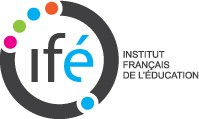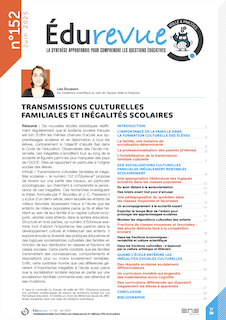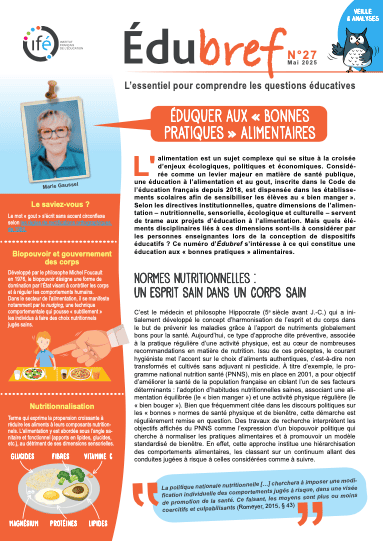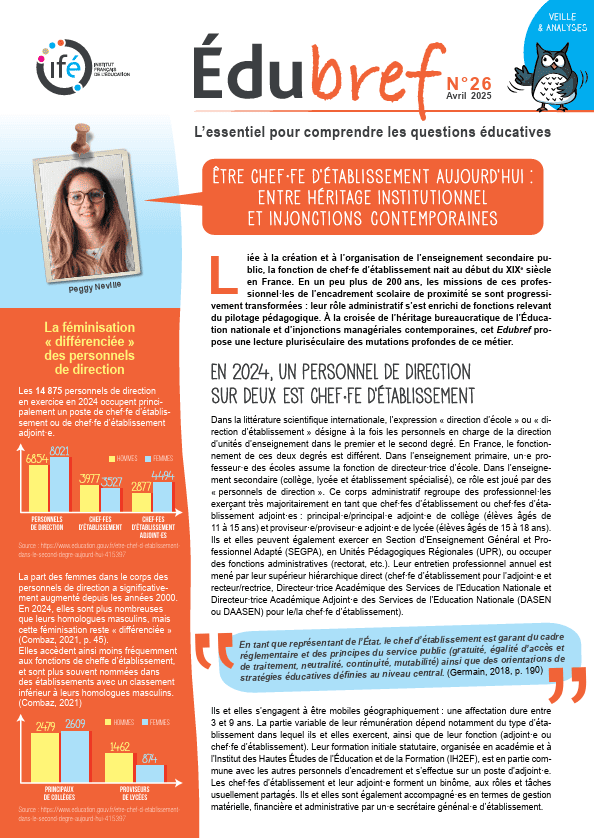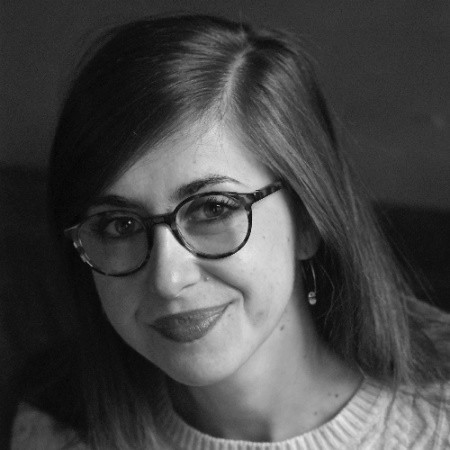S’éduquer en Anthropocène entre Héphaïstos et Athéna : vers un ingenium des entrelacs terriens/machines
Auteur(s) : GAUDIN Olivier
Date de soutenance : 2021
Thèse délivrée par : Université de Pau et des Pays de l'Adour
Section(s) CNU : section 70 : Sciences de l'éducation
Sous la direction de : Frédérique LERBET-SÉRÉNI
Jury de thèse : Cécile Goï ; Christian La Borderie ; Jean-Marc Lange ; Frédérique Lerbet-Séréni
"L’évènement Anthropocène, en rompant les équilibres fondamentaux entre la Terre et les humains qui y habitent, ébranle, dans le même mouvement, les fondements des institutions de transmissions d’une culture qui a participé de ces ruptures. Que transmettre alors à la nouvelle génération ? Ce qui a été considéré comme une actualisation de cet évènement, la reconversion d’ingénieurs vers un métier dit « porteur de plus de sens », ici le métier d’enseignant, interroge en miroir ces institutions. Ces reconversions vers le métier d’enseignant bousculent par exemple les formations à ce métier qui sont conçues selon le modèle de la formation initiale, questionné ici, et non selon celui des processus éducatifs tout au long de la vie. Ces intrusions de corps avec leur expérience propre mettent un peu en lumière l’imaginaire de ce système scolaire français et plus particulièrement celui des lycées dont la création par Napoléon se lie avec la centralisation de l’État français. La figure problématique imaginaire, fil conducteur de cette recherche, sera celle de Prométhée dont les mythes sont souvent convoqués pour comprendre l’hubris de l’Anthropocène. C’est avec la théorie de l’énaction (Varela) et une anthropologie de l’éducation (Lerbet-Séréni) que s’est élaborée dans cette thèse une approche de l’ingenium entre mythe et énaction. Elle est une autre voie que celle de la distinction Nature/Culture pour explorer l’expérience comprise comme évènements vécus et continuellement interprétés. C’est cette expérience propre des corps qui a souvent été mise à l’écart aussi bien par la forme scolaire que par la distinction Nature/Culture qui l’imprègne. C’est à partir de cette autre approche en ingenium, approche qui cherche à conjoindre plutôt qu’à disjoindre, que l’action efficace dans le monde, faire pour comprendre, comprendre pour faire, sera comprise comme technè et cognition incarnée avec la figure d’Héphaïstos. Ce que montre l’Anthropocène, c’est que l’action efficace a trop souvent été disjointe des questions éthiques de ce qu’elle produit. Dans cette approche en ingenium, ce questionnement éthique ne se réduit pas à un raisonnement intellectuel mais passe par le corps et peut être compris par « mon corps se révolte, nous sommes ». Ce passage d’un humain rêvé mais hors-sol aux terriens (Latour) permet de comprendre autrement nos relations aux machines. Revenir à l’expérience permet de les comprendre comme entrelacs terriens/machines, s’entrelacer avec les machines se faisant de manière plus ou moins ouverte selon que l’on s’ouvre ou que l’on se ferme au non-sens produit en incarnation. Le terrain de la méthodologie est constitué de trois ingénieurs devenus enseignants. Des entretiens non-directifs suivis d’une analyse de contenu ont montré sept formes scolaires d’entrelacs terriens/machines. Les machines de la forme scolaire se sont plutôt fermées au non-sens produit par les rencontres intergénérationnelles en voulant, dans une approche prométhéenne, préparer à un futur pourtant incertain. En s’ouvrant à l’incertain, s’éduquer en Anthropocène entre Héphaïstos et Athéna, voudrait dire s’autoriser à laisser s’engendrer des entrelacs terriens/machines avec leurs terrains de vie, ce dont on dépend pour vivre (Latour), tout en écrivant et en éprouvant entre soi et les autres des savoirs à propos de ce qui s’y est élaboré en cheminant. Cette autre approche ouvre à d’autres chemins vers où s’éduquer en Anthropocène."
"The Anthropocene event, by breaking the fundamental balances between the Earth and the humans who inhabit it, shakes, in the same movement, the foundations of the institutions of transmission of a culture that participated in these ruptures. What then to transmit to the new generation? What was considered an update of this event, the reconversion of engineers to a profession called "bearer of more meaning", here the profession of teacher, questions in mirror these institutions. These conversions to the teaching profession are, for example, shaking up training in this profession, which is designed according to the model of initial training, questioned here, and not according to that of lifelong educational processes. These intrusions of bodies with their own experience shed some light on the imagination of this French school system and more particularly that of the lycées whose creation by Napoleon is linked with the centralization of the French State. The imaginary problematic figure, the common thread of this research, will be that of Prometheus whose myths are often summoned to understand the hubris of the Anthropocene. It is with the theory of enaction (Varela) and an anthropology of education (Lerbet-Séréni) that an approach to ingenium between myth and enaction was developed in this thesis. It is another way than that of the Nature/Culture distinction to explore the experience understood as lived and continuously interpreted events. It is this own experience of bodies that has often been sidelined both by the school form and by the distinction between Nature and Culture that permeates it. It is from this other ingenium approach, an approach that seeks to join rather than disjoin, that effective action in the world, to do to understand, to understand to do, will be understood as technè and cognition embodied with the figure of Hephaestus. What the Anthropocene shows is that effective action has too often been disjointed from ethical questions of what it produces. In this ingenium approach, this ethical questioning is not reduced to intellectual reasoning but goes through the body and can be understood by "my body revolts, we are". This passage from a dreamed but above-ground human to the earthlings (Latour) makes it possible to understand our relationships with machines differently. Returning to experience makes it possible to understand them as earthling/machines interlacing, interlacing with machines being done in a more or less open way depending on whether we open or close ourselves to the nonsense produced in incarnation. The field of the methodology consists of three engineers turned teachers. Non-directive interviews followed by content analysis showed seven school-based forms of earthling/machines interlacing. The machines of the school form have rather closed themselves to the nonsense produced by intergenerational encounters by wanting, in a Promethean approach, to prepare for a future that is nevertheless uncertain. By opening oneself to the uncertain, educating oneself and others in the Anthropocene between Hephaestus and Athena, would mean allowing oneself to let earthling/machines interlacing with their fields of life be generated, which one depends on to live (Latour), while writing and experiencing between oneself and others knowledge about what was developed there while walking. This other approach opens up other paths to where to educate between oneself and others in the Anthropocene."
URL : https://theses.hal.science/tel-03916624
mot(s) clé(s) : éducation au développement durable, au changement climatique et à la transition écologique, orientation professionnelle

